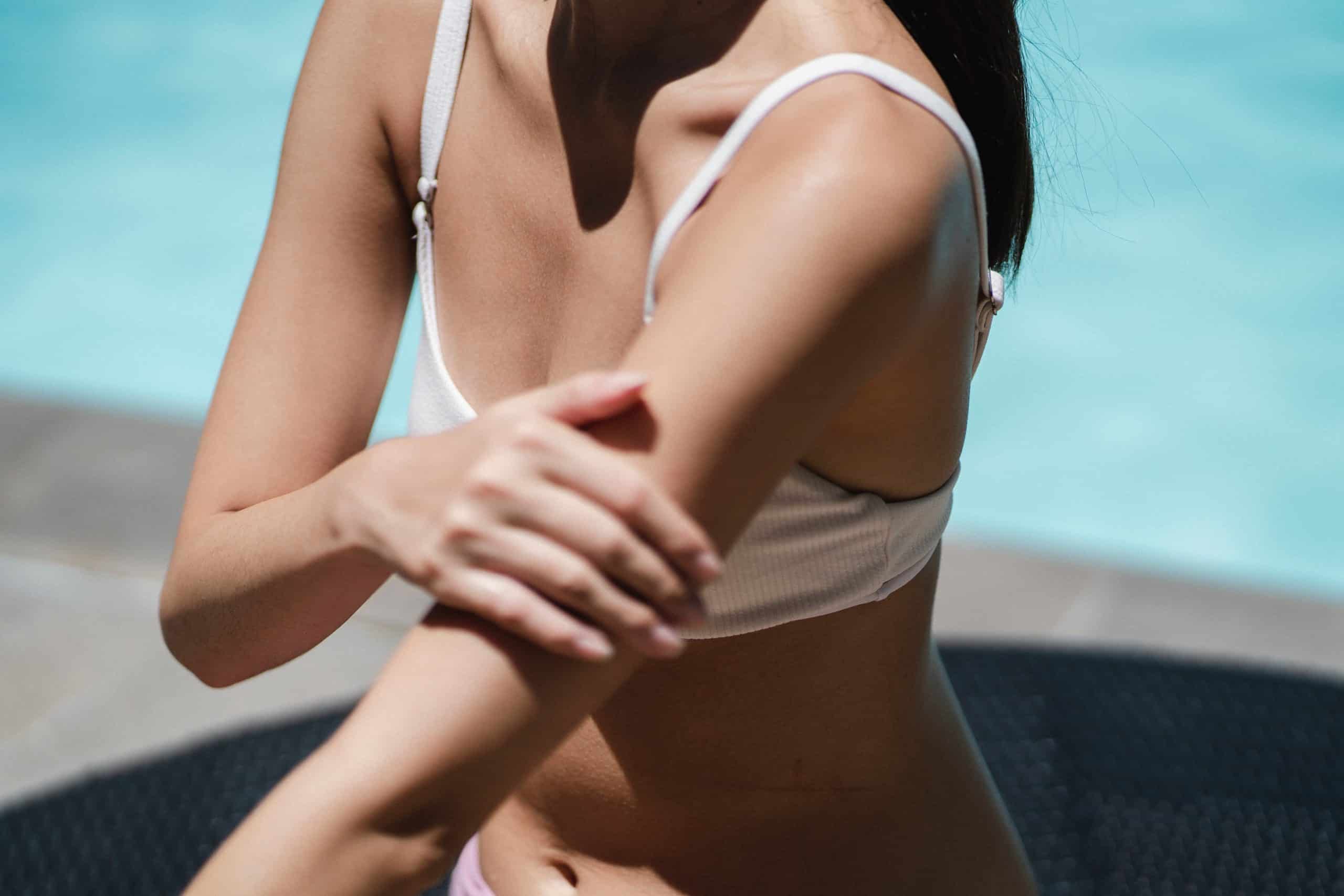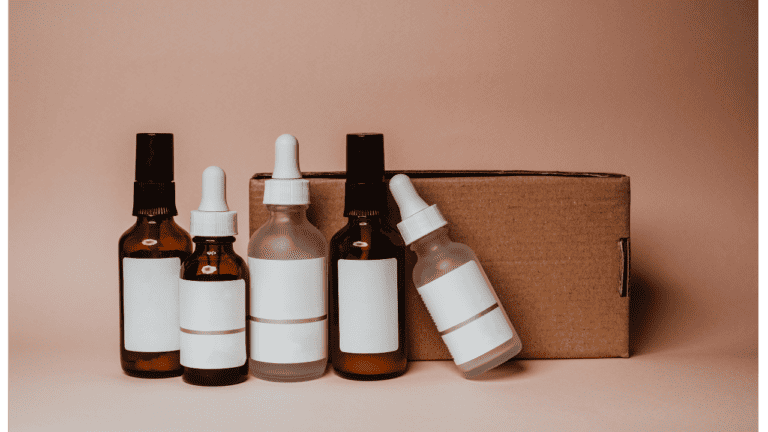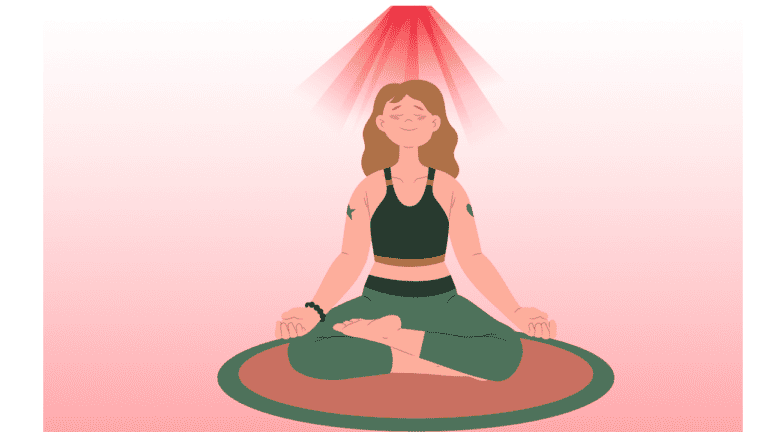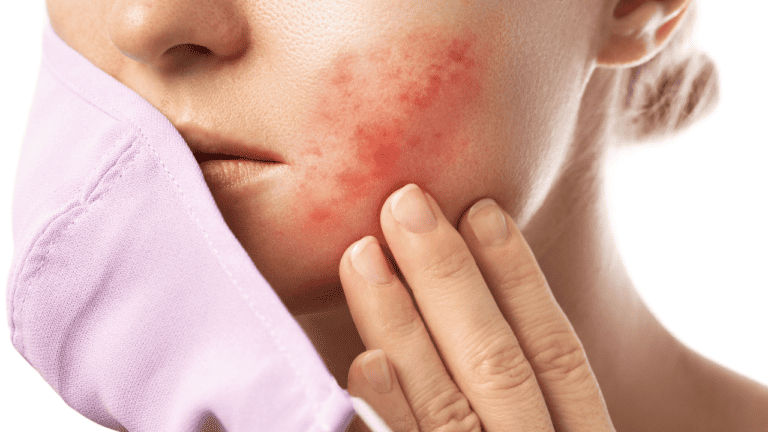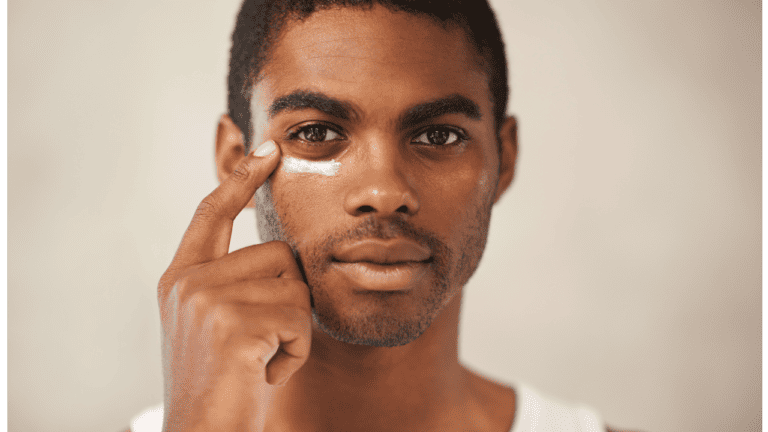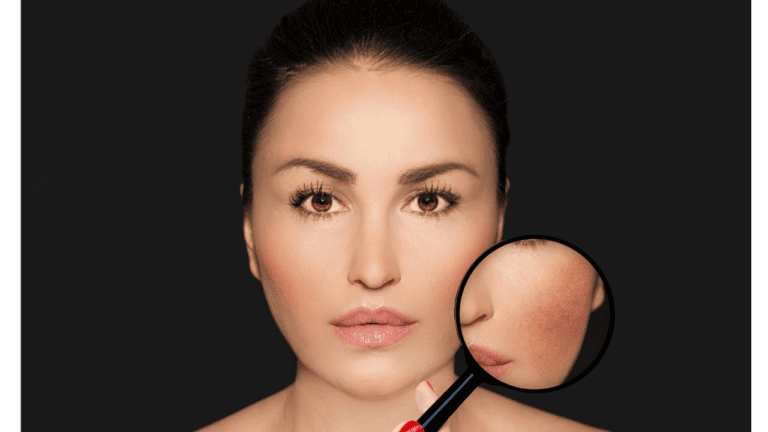As someone who loves wearing makeup and spending time in the sun, I know firsthand the struggle of finding a sunscreen that can be easily applied over my makeup without ruining it. Apparently, we should be reapplying our sunscreen multiple times per day if you’re out in the sun for a few hours.
Sunsticks and sunsprays are two popular options for reapplying sunscreen over makeup, but which one is better? In this article, I’ll explore the pros and cons of both sunsticks and sunsprays for over makeup application and determine which one reigns supreme.
Understanding the differences between sunsticks and sunsprays is crucial in deciding which one is better for over makeup application. Sunsticks are solid, stick-like sunscreens that can be applied directly to the skin without the need for rubbing in. Sunsprays, on the other hand, come in a can and are sprayed onto the skin. While both options have their benefits, they also have their downsides, which I’ll discuss in detail throughout this article.
Key Takeaways:
- Sunsticks and sunsprays are popular options for reapplying sunscreen over makeup, but they have different application methods and benefits.
- Sunsticks are easy to apply and mess-free, but they can be difficult to blend into the skin and may leave a white cast.
- Sunsprays are quick and convenient, but they can be messy and may not provide as much coverage as sunsticks.
Understanding Sunsticks and Sunsprays
Sunsticks
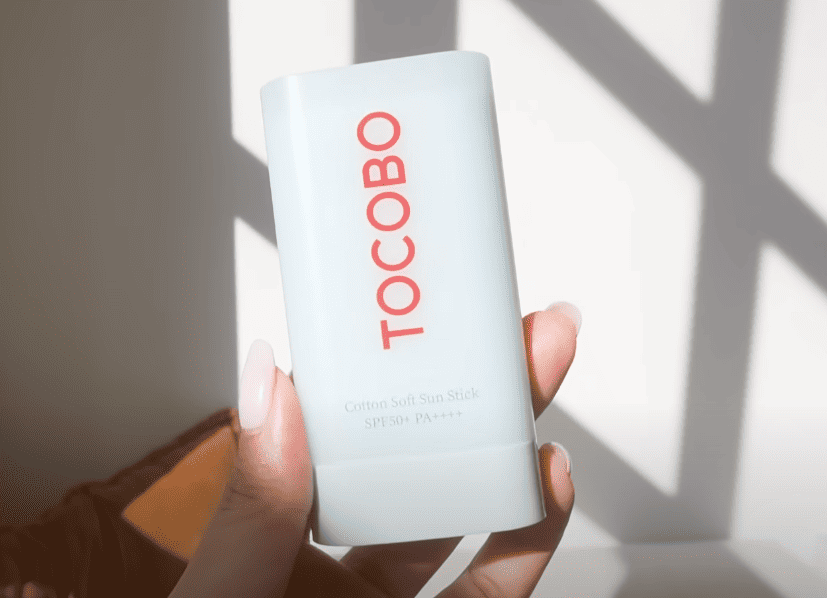
When it comes to sunscreen, sunsticks are a great option for those who want to apply sunscreen over makeup, although they do need physical contact with your face so it might move your makeup a little bit. Sunscreen sticks are still popular because they are easy to apply and convenient to carry around in comparison to a liquid sunscreen, since they can be applied with just one hand.
Sunscreen sticks are available in different types, including chemical and physical sunscreens. Chemical sunscreens work by absorbing UV rays, while physical sunscreens use minerals like zinc oxide and titanium dioxide to reflect UV rays. If you have sensitive skin, it is recommended to use physical sunscreens as they are less likely to cause irritation, however these usually have more of a white-cast application look.
Sunsprays
Sunsprays are another option for those who want to apply sunscreen over makeup. Sunsprays are easy to apply and can be sprayed directly onto the skin. They are also convenient to carry in your purse or bag.
Sunsprays are available in different types, including chemical and physical sunscreens. Chemical sunscreens work by absorbing UV rays, while physical sunscreens use minerals like zinc oxide and titanium dioxide to reflect UV rays. If you have sensitive skin, it is recommended to use physical sunscreens as they are less likely to cause irritation.
Type of Sunscreen
When choosing between sunsticks and sunsprays, it is important to consider the type of sunscreen that you prefer. If you prefer chemical sunscreens, then both sunsticks and sunsprays are great options. However, if you prefer physical sunscreens, then sunsticks may be a better option as they are less likely to cause irritation. (There are still many chemical sunsticks so be aware of which one you’re buying.)
Skin Protection
Both sunsticks and sunsprays provide protection against harmful UV rays. However, it is important to ensure that you apply enough sunscreen to provide adequate protection. It is recommended to apply sunscreen at least 15 minutes before sun exposure and reapply every two hours or immediately after swimming or sweating.
In summary, both sunsticks and sunsprays are great options for those who want to apply sunscreen over makeup. When choosing between the two, it is important to consider the type of sunscreen that you prefer and to ensure that you apply enough sunscreen to provide adequate protection.
Pros of Stick Sunscreen
When it comes to applying sunscreen over makeup, I find that Sunsticks have some advantages over Sunsprays. Here are some of the pros of using Sunstick sunscreen:
- Easy to Apply: Sunstick sunscreen is very easy to apply and can be used even on the go. You can simply swipe it over your face and neck without worrying about getting it on your clothes or hair.
- Precise Application: Sunsticks allow for precise application, which is especially important when applying sunscreen over makeup. You can apply it exactly where you need it without worrying about getting it in your eyes or on your lips.
- No Mess: Sunstick sunscreen is also mess-free, which is a big plus. Unlike Sunsprays, it won’t leave any residue on your clothes or hair.
- Travel-Friendly: Sunstick sunscreen is very travel-friendly and can be easily carried in your purse or bag. It’s also TSA-approved, so you can take it with you on flights without any issues.
- Long-Lasting: Sunstick sunscreen is also long-lasting, which means that you won’t have to reapply it as often as you would with Sunsprays. This is especially important if you’re going to be out in the sun for long periods of time.
Overall, I find that Sunstick sunscreen is a great option for those who want to apply sunscreen over makeup. It’s easy to apply, mess-free, and long-lasting, making it a convenient and effective way to protect your skin from the sun’s harmful rays.
Cons of Stick Sunscreen
While stick sunscreens are convenient for on-the-go application, there are a few downsides to consider.
Firstly, stick sunscreens can be harder to apply evenly compared to sprays. This is especially true when applying over makeup, as the stick can drag and disrupt the makeup underneath.
Additionally, stick sunscreens tend to have a thicker consistency, which can feel heavy on the skin. Plus, dermatologists recommend applying more than 1 layer, even up to 4 layers of sunsticks in order to get their full spf benefits. This can be uncomfortable, especially on hotter days when you want to avoid feeling weighed down by your skincare products.
Another potential issue with stick sunscreens is that they may not provide enough coverage. It can be difficult to apply enough product evenly to cover the entire face, which can leave some areas of the skin unprotected from harmful UV rays.
Pros of Spray Sunscreen
When it comes to applying sunscreen over makeup, spray sunscreen can be a great option. Here are a few reasons why:
- Convenience: Spray sunscreen is easy and quick to apply, making it a great option for those who are always on the go. It can be easily sprayed over makeup without smudging or ruining the makeup.
- Even Coverage: Spray sunscreen provides even coverage and can be easily applied to hard-to-reach areas, such as the back and shoulders. It also doesn’t leave any streaks or white residue.
- Less Greasy: Spray sunscreen is less greasy than traditional sunscreen lotions, making it a great option for those with oily skin. It also dries quickly, leaving a matte finish.
- Variety of Formulas: Spray sunscreen comes in a variety of formulas, including water-resistant and sweat-resistant options. This makes it a great option for those who enjoy outdoor activities or sports.
Overall, spray sunscreen can be a great option for those who want to protect their skin from the sun’s harmful rays without ruining their makeup. However, it’s important to remember to apply enough sunscreen and reapply it every two hours to ensure maximum protection.
Cons of Spray Sunscreen
As someone who has used spray sunscreen for years, I can attest that there are some downsides to this type of application method. Here are a few cons to consider:
Firstly, spray sunscreen can be quite messy. It’s easy to accidentally overspray, which can leave a greasy residue on clothing, hair, and even your makeup. Plus, if it’s windy outside, the spray can go everywhere except where you want it to go.
Secondly, spray sunscreen can be difficult to apply evenly. It’s easy to miss spots, especially if you’re trying to apply it over makeup. This can result in uneven protection and potential sunburns.
Thirdly, spray sunscreen can be harmful if inhaled. While most sprays are designed to be safe for use on the skin, inhaling the mist can be dangerous, especially for those with respiratory issues. It’s important to apply spray sunscreen in a well-ventilated area and avoid inhaling the mist.
Lastly, spray sunscreen can be more expensive than traditional lotions or sticks. While it may seem more convenient, the cost can add up over time, especially if you need to reapply frequently.
Overall, while spray sunscreen can be a convenient option, it’s important to weigh the pros and cons before deciding if it’s the right choice for you.
How Good Are They at UV Protection?
When it comes to sun protection, both sunsticks and sunsprays can provide effective UV protection. However, the level of protection can vary depending on the product’s formulation and application method.
UV radiation is divided into two categories: UVA and UVB. UVA rays penetrate deeper into the skin and cause premature aging, while UVB rays cause sunburns. It’s essential to choose a product that offers broad-spectrum protection against both UVA and UVB rays.
Zinc oxide is a common ingredient found in sun protection products. It’s a mineral that provides physical protection against UV radiation and is known for its broad-spectrum protection.
When comparing sunsticks and sunsprays, it’s important to note that sunsticks are generally thicker and offer more concentrated protection in a smaller area. On the other hand, sunsprays offer more even coverage and are easier to apply to larger areas of the body.
When using either product, it’s crucial to apply enough to ensure full coverage and reapply as directed to maintain protection. It’s also important to note that no sun protection product can provide 100% protection against UV radiation, so it’s essential to take additional sun safety measures such as seeking shade, wearing protective clothing, and avoiding peak sun hours.
Overall, both sunsticks and sunsprays can provide effective UV protection when used correctly. It’s important to choose a broad-spectrum product that contains zinc oxide and to apply and reapply as directed for optimal protection.
Application Over Makeup: Which Is Better?
When it comes to applying sunscreen over makeup, both sunsticks and sunsprays have their pros and cons. As someone who wears makeup regularly, I’ve experimented with both options and have found that it ultimately depends on personal preference and the situation.
If I need to reapply sunscreen over makeup throughout the day, I typically reach for a sunstick. Sunsticks are convenient because they are compact and easy to apply without messing up my makeup. I simply swipe the sunscreen stick over my face and blend it in with my fingers. However, sunsticks can feel a bit heavy on the skin and may not be the best option for those with oily skin.
On the other hand, sunsprays are great for touch-ups on the go. I like to keep a small bottle of sunscreen spray in my purse for when I’m out and about. Spraying sunscreen over makeup is quick and easy, and it doesn’t leave a heavy or greasy feeling on my skin. However, it’s important to note that sunsprays can cause makeup to smudge or run if not applied carefully.
If you’re worried about your makeup getting ruined when applying sunscreen, there are a few tips and tricks you can try:
- Use a powder sunscreen: Powder sunscreens are designed to be applied over makeup and can help to mattify oily skin. Simply dust the powder over your face with a brush for easy reapplication.
- Use a setting spray: A setting spray can help to lock your makeup in place and prevent it from smudging or running when applying sunscreen. Simply spritz the setting spray over your face before applying sunscreen.
- Be gentle: When applying sunscreen over makeup, be gentle and avoid rubbing or smudging your makeup. Pat the sunscreen onto your skin instead of rubbing it in.
In conclusion, both sunsticks and sunsprays have their benefits when it comes to applying sunscreen over makeup. It ultimately comes down to personal preference and the situation. If you need to reapply sunscreen throughout the day, a sunstick may be the best option. If you’re on the go and need a quick touch-up, a sunscreen spray may be more convenient.
Best Practices for Reapplication
When it comes to reapplying sunscreen over makeup, there are a few best practices to keep in mind to ensure consistent protection throughout the day.
Firstly, it’s important to reapply sunscreen every two hours, or more frequently if you’re sweating or swimming. To make this easier, carry a small bottle of sunscreen with you throughout the day.
When it’s time to reapply, gently blot your face with a tissue to remove any excess oil or sweat. Then, apply the sunscreen in a patting motion, rather than rubbing it in, to avoid disturbing your makeup.
If you’re using a sunstick, apply it directly to your face and blend it in with your fingers. If you’re using a sunspray, hold the bottle several inches away from your face and spray it in a circular motion.
To avoid any potential smudging or smearing of your makeup, it’s best to avoid touching your face after applying sunscreen.
By following these best practices for reapplication, you can ensure that your skin stays protected from the sun’s harmful rays, while still maintaining a consistent and flawless makeup look throughout the day.
Skin Type Considerations
When it comes to choosing between sunsticks and sunsprays for over makeup application, it is important to consider your skin type. As someone with sensitive skin, I know how challenging it can be to find a product that doesn’t cause irritation or breakouts. Here are some things to keep in mind:
- Sensitive skin: If you have sensitive skin, you’ll want to look for a product that is gentle and non-irritating. Both sunsticks and sunsprays can be good options, but make sure to choose one that is labeled as suitable for sensitive skin.
- Non-greasy: If you have oily or combination skin, you’ll want to avoid products that leave a greasy residue. Sunsticks are generally less greasy than sunsprays, so they may be a better option for you.
- Oil-free: If you have acne-prone skin, you’ll want to look for a product that is oil-free and non-comedogenic. Sunsticks are often a good choice for acne-prone skin, as they are less likely to clog pores.
- No white cast: If you have darker skin, you’ll want to avoid products that leave a white cast. Sunsticks are generally more transparent than sunsprays, so they may be a better option for you.
Overall, both sunsticks and sunsprays can be effective for over makeup application. However, it’s important to choose a product that is suitable for your skin type and won’t cause irritation or breakouts.
Water Resistance
When it comes to choosing between sunsticks and sunsprays, water resistance is an important factor to consider. Time at the beach and pool is very important, so I want a product that can withstand water and sweat.
Both sunsticks and sunsprays come in water-resistant formulas, but it’s important to pay attention to the level of water resistance. Some products are labeled as “water-resistant” while others are labeled as “water-resistant for 80 minutes.” This means that the product will maintain its SPF protection for 80 minutes of water exposure before needing to be reapplied.
Personally, I prefer a product with at least 80 minutes of water resistance. This gives me enough time to swim or sweat without having to constantly reapply. It’s also important to note that water-resistant products should still be reapplied after towel-drying or excessive sweating.
When comparing sunsticks and sunsprays, I’ve found that sunsticks tend to have a more water-resistant formula. This is likely due to the thicker consistency of the product. However, it’s important to make sure that the sunstick is evenly applied to ensure proper coverage.
Overall, both sunsticks and sunsprays can provide water-resistant protection, but it’s important to pay attention to the level of water resistance and to reapply as needed.
Popular Brands
When it comes to sun protection, there are a lot of brands and products to choose from. Here are some popular brands that offer sunsticks and sunsprays that can be used over makeup:
- Supergoop! – Supergoop! is a popular brand that offers a variety of sun protection products, including sunsticks and sunsprays. Their products are formulated to be lightweight and non-greasy, making them ideal for use over makeup.
- Neutrogena – Neutrogena is another popular brand that offers sun protection products. They have a variety of sunsticks and sunsprays that are designed to be easy to apply and provide long-lasting protection.
- EltaMD – EltaMD is a brand that specializes in skincare products, including sun protection. Their sunsticks and sunsprays are formulated with high-quality ingredients to provide effective protection without irritating the skin.
- Shiseido – Shiseido is a Japanese brand that offers a range of skincare and makeup products. They have a variety of sun protection products, including sunsticks and sunsprays, that are designed to be gentle on the skin and provide long-lasting protection.
- Coola – Coola is a brand that offers organic and natural sun protection products. Their sunsticks and sunsprays are formulated with high-quality ingredients and are free from harmful chemicals, making them ideal for those with sensitive skin.
- Cetaphil Sheer Mineral Sunscreen Stick – Cetaphil is a brand that is known for its gentle and effective skincare products. Their sheer mineral sunscreen stick is designed to be easy to apply and provide long-lasting protection without irritating the skin.
- Babo Botanicals – Babo Botanicals is a brand that offers natural and organic sun protection products. Their sunsticks and sunsprays are formulated with high-quality ingredients and are free from harmful chemicals, making them ideal for those with sensitive skin.
Overall, there are many popular brands that offer sunsticks and sunsprays that can be used over makeup. It’s important to choose a product that is formulated for your skin type and provides effective protection against the sun’s harmful rays.
Conclusion
After analyzing the pros and cons of sunsticks and sunsprays for over makeup application, I have come to the following conclusion.
Both sunsticks and sunsprays are convenient options for reapplying sunscreen over makeup. However, sunsticks are better for targeted application and touch-ups, whereas sunsprays are better for quick and easy application over larger areas.
Sunsticks provide more precise application and are less likely to cause any mess or smudging of makeup. They are also more portable and can easily fit in a purse or pocket for on-the-go touch-ups. On the other hand, sunsprays provide quick and easy application over larger areas, making them ideal for outdoor activities.
When it comes to SPF protection, both sunsticks and sunsprays offer similar levels of protection. However, it is important to note that the effectiveness of any sunscreen product depends on proper application and reapplication.
In terms of UV protection, both sunsticks and sunsprays provide effective protection against harmful UV rays. It is important to choose a sunscreen product with broad-spectrum protection to ensure protection against both UVA and UVB rays.
Overall, the choice between sunsticks and sunsprays for over makeup application depends on personal preference and specific needs. It is important to choose a product that fits your lifestyle and provides adequate protection against harmful UV rays.
Frequently Asked Questions
What are some good sunscreen sticks for oily skin?
As someone with oily skin, I know how difficult it can be to find a sunscreen that doesn’t leave a greasy residue. Some great sunscreen sticks for oily skin include Neutrogena Clear Face Sunscreen Stick, Supergoop! Defense Refresh Setting Mist SPF 50, and COOLA Mineral Sunscreen Stick.
Is a sunstick a better option than traditional sunscreen?
Sunsticks are a great option for those who want to apply sunscreen over makeup or on-the-go. They are easy to apply and mess-free. However, traditional sunscreen may offer better coverage and protection, especially if you are spending an extended amount of time in the sun.
What is the best Korean sunscreen stick for use over makeup?
Korean skincare is known for its innovative and effective products. Some great Korean sunscreen sticks for use over makeup include Missha All Around Safe Block Essence Sun Stick, A’PIEU Pure Block Natural Sun Cream Stick, and Etude House Sunprise Mild Airy Finish Sun Stick.
How can I reapply sunscreen over makeup without ruining it?
Reapplying sunscreen over makeup can be tricky, but it’s important to protect your skin from the sun’s harmful rays. One option is to use a sunscreen spray or mist, which can be applied over makeup without ruining it. Another option is to use a sunscreen stick or powder, which can be applied directly over makeup.
Can sunscreen sticks be applied over makeup?
Yes, sunscreen sticks can be applied over makeup. They are designed to be applied directly to the skin, so they won’t disrupt your makeup. However, it’s important to blend the sunscreen in well to avoid any white residue.
What is the best way to reapply sunscreen after sweating?
If you’re sweating, it’s important to reapply sunscreen every 2 hours or immediately after swimming or sweating. One option is to use a sunscreen spray or mist, which can be applied quickly and easily. Another option is to use a sunscreen stick or powder, which can be applied directly to the skin without the need for rubbing or blending.
